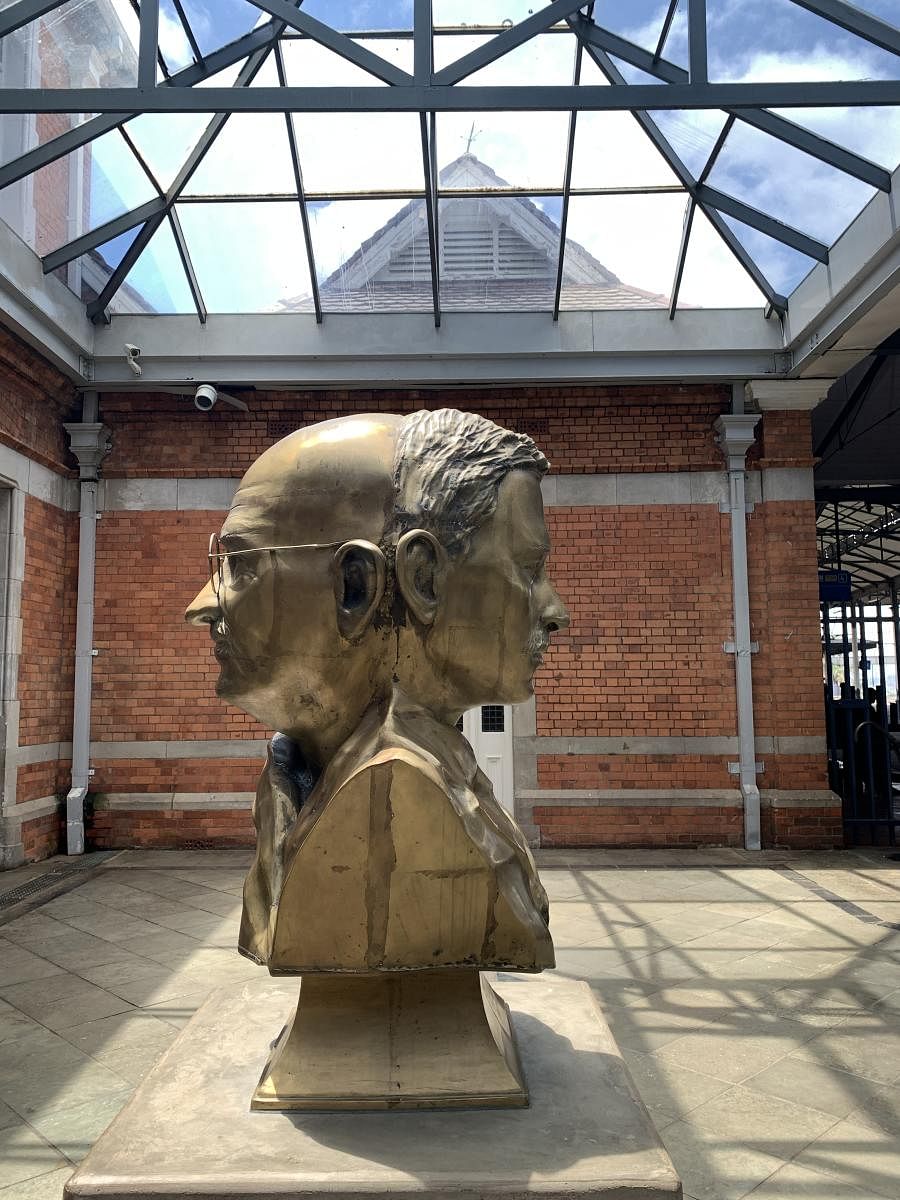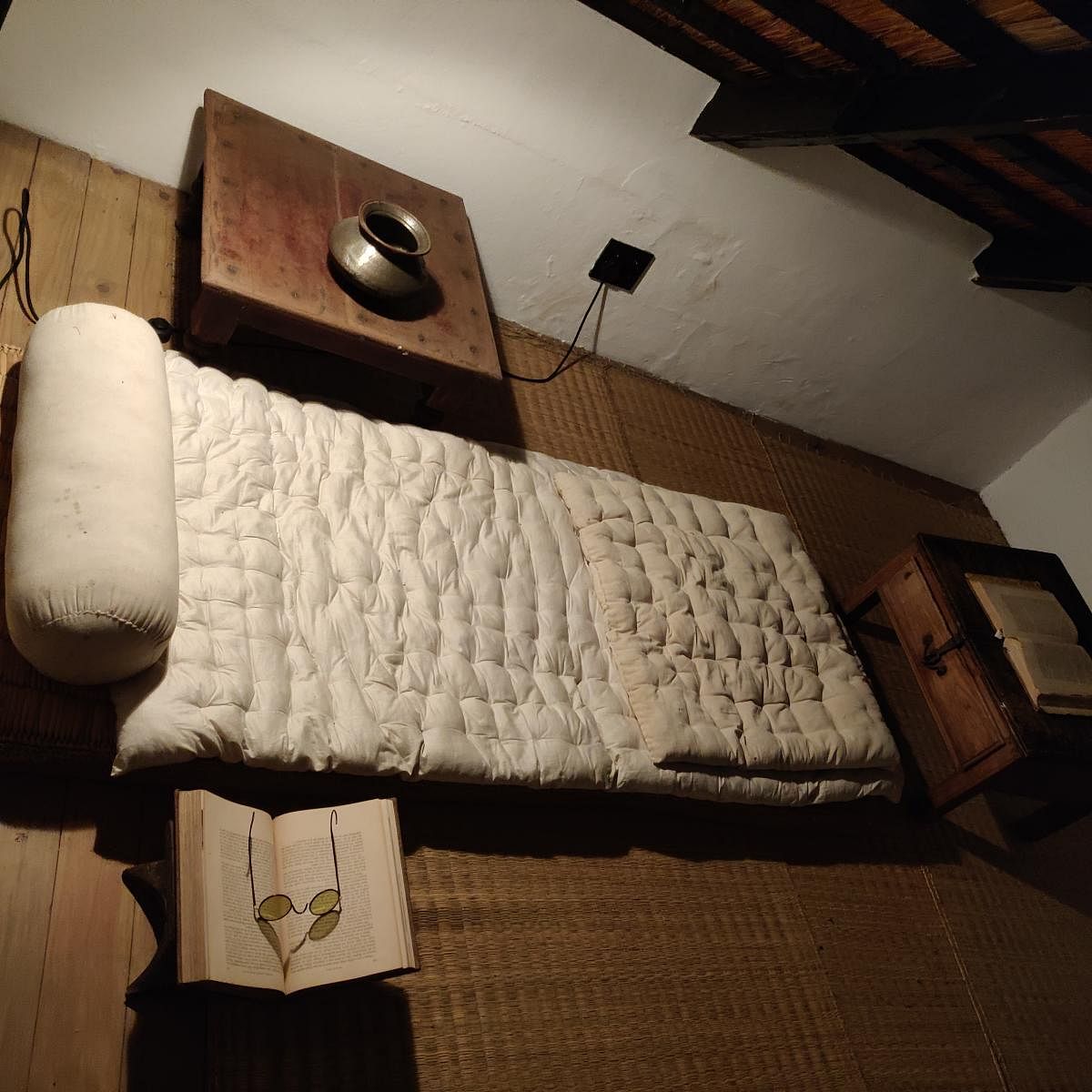

The British supposedly sniggered when they heard that a protest was being planned against tax laws for something as trivial as salt. But the 24-day Dandi March, held 92 years ago beginning March 12, marked the launch of Mahatma Gandhi’s non-violence and civil disobedience movement in India.
The seeds of this movement, which went on to rock the very foundation of the British Empire, were sown 7,200 miles away in South Africa, where he lived from 1893 to 1914.
Shortly before the pandemic brought travel to a halt, I went on the Gandhian trail in South Africa, exploring the birthplace of the ideology that gave India independence, influenced Martin Luther King and Albert Einstein, and impacted South Africa’s fight against apartheid.
Where it all began
Small and quaint, Pietermaritzburg railway station is unremarkable except for the infamous incident that gave it a place in history books. This was where — on June 7, 1893 — a young Gandhi was booted out of a first-class 'Whites Only' compartment of a train despite having a valid ticket and forced to spend the night at the station. His account of that night spent in the waiting room, shivering in the freezing winter temperatures of the Southern Hemisphere is well known and documented in his autobiography, The Story of My Experiments With Truth.
But what’s lesser-known is the fact that Gandhi’s harrowing experience didn’t end there. He was harassed many times during his onward journey. A racist stagecoach hand assaulted him for refusing to sit on the floor. “..the man came down upon me and began heavily to box my ears. He seized me by the arm and tried to drag me down. I clung to the brass rails of the coachbox and was determined to keep my hold even at the risk of breaking my wrist bones,” he wrote. Later, a White hotel manager denied him a room. He was again heckled by a ticket inspector for sitting in a first-class compartment, despite possessing a valid ticket.
These incidents acted as a catalyst for him to form the Natal Indian Congress in 1894, which held non-violent protests against racist policies that targeted Indians and Africans. “The hardship to which I was subjected was superficial — only a symptom of the deep disease of colour prejudice. I should try, if possible, to root out the disease and suffer hardships in the process. Redress for wrongs I should seek only to the extent that would be necessary for the removal of the colour prejudice,” he explained.
Today, the waiting room at Pietermaritzburg station houses a tiny museum dedicated to Gandhi. The station was empty when we visited until a fashion shoot crew turned up and converted the platform into a catwalk.
A plaque has been put up to mark the infamous incident, and in 2018, a bronze double bust, depicting Gandhi in his youth and senior years was unveiled on the small platform.
Pietermaritzburg town has a statue of Gandhi in his familiar stance with a staff. In 1997, he was posthumously awarded 'Freedom of the City of Pietermaritzburg'. Nelson Mandela is reported to have remarked on the occasion, “Today we are righting a century-old wrong.”
Phoenix Settlement
Gandhi set up the Phoenix Settlement, in Inanda, 26 km away from Durban, in 1904. Considered to be his first ashram, he says in his autobiography that the concept of Phoenix Settlement was inspired by John Ruskin’s Unto This Last.
“The teaching of Unto This Last I understood to be: 1. That the good of the individual is contained in the good of all. 2. That a lawyer's work has the same value as the barber's in as much as all have the same right of earning their livelihood from their work. 3. That a life of labour, i.e., the life of the tiller of the soil and the handicraftsman, is the life worth living. The first of these I knew. The second I had dimly realised. The third had never occurred to me. Unto This Last made it as clear as daylight for me that the second and the third were contained in the first. I arose with the dawn, ready to reduce these principles to practice. ”
Gandhi was also influenced by Tolstoy’s appreciation for simple rural living and is said to have been impressed by an Order of Trappist monks near Durban who practiced self-discipline and frugality.
The 100-acre plot was bought for £1000, and named after the mythical bird that rose from the ashes. It was surrounded by sugarcane fields, orange, and mango trees, had a spring running through it, and a dilapidated cottage. The printing press for Indian Opinion, a journal Gandhi had started with Madanjit Vyavaharikin in 1903, was shifted to the farm to be run like a co-operative.
The settlement offered food, accommodation, and education to those working in the press and their families, and subsequently extended to those involved in the Satyagraha campaigns. Communal living, self-sufficiency, and equality were emphasised.
The original house, named Sarvodaya, and buildings including the printing press, were destroyed in riots in 1985. In 2000, it was restored as a museum that pays tribute to Gandhi and Kasturba’s life in South Africa.
In 2020, the South African government declared the Phoenix Settlement a National Heritage Site.
Our tour guide
“Do you want to meet Gandhi’s family member? She can show you around too,” Bongani, the 6-foot-4-inch Zulu guide at the Phoenix Settlement asked casually. We agreed, never imagining it would be Ela Gandhi, the Mahatma’s granddaughter who was at the settlement on work.
She was watching a group of children boisterously climb up a mango tree in the neighbouring yard. “My heart is in my mouth. The young have no fear,” she said by way of greeting as if we had known her all our lives.
“Bapu left South Africa in 1914, my father came back to the settlement in 1919 and ran everything,” she told us. “My mother took over after him. My family has been here ever since.”
Ela Gandhi is the youngest daughter of Gandhi’s second son Manilal. Born on the Phoenix Settlement in 1940 and brought up in South Africa, she has followed the footsteps of her legendary grandfather.
An activist and proponent of the non-violent movement from a young age, she was an ANC party member and the South African Parliament member from 1994 to 2004. During apartheid, she was placed under house arrest for nearly a decade and worked underground against the regime. She now heads the Gandhi Development Trust which looks after the Phoenix Settlement.
"I have only very faint memories of my grandmother. Ba was said to be very calm, very strong. But I clearly remember the storytelling sessions with Bapu when we visited him in India," she reminisced. "He always made time for us children, and never infantilised us as grandparents sometimes do. Even though we were very young, he used to write letters to us."
She bid us farewell after spending almost two hours with us. "What saddens me nowadays is that he is so misunderstood. People forget that he was just a human being. Mahatma was a title that others gave him,” she said wistfully.
Satyagraha house
In the middle of bustling Johannesburg stands a quiet oasis of greenery surrounding a white rounded building with thatched roofs. This is where Gandhi lived from 1908 to 1909 with his Jewish friend Hermann Kallenbach. Kallenbach was a successful architect and an avid sportsman. The two struck up a friendship over their common love for Tolstoy and Ruskin, and Gandhi went on to become a major influence in Kallenbach’s life. "Living alone, and removed — in all senses — from his family in Europe, Kallenbach looked to Gandhi for succour and support," writes author-historian Ramachandra Guha in his book Gandhi Before India.
The home that the two shared in the Orchards area of Johannesburg was designed and built by Kallenbach in 1907. Its shape mimicked African huts or rondavels, but the interiors were Edwardian. They named the house The Kraal (barn in Afrikaans).
Gandhi had become a Brahmachari by 1906, so his living quarters were sparse and basic, though the main grounds had tennis courts and stables.
In 2011, a French travel company, Voyageurs du Monde, bought the property, restored and converted it into a museum-cum-guest house. They also gave the Kraal its current name — Satyagraha House.
Tolstoy farm
Kallenbach, who owned a lot of property, donated 1,100 acres of land in 1910 to build Tolstoy Farm, named by him and later known as the training grounds for the Satyagraha movement. Around 80 people lived there initially, practising self-sufficiency, simple living, and learning the fundamentals of non-violence and Satyagraha.
In his book Satyagraha in South Africa, Gandhi underlined that the training on the farm played a huge role in the success of the Satyagraha movement in South Africa. "I have serious doubts as to whether the struggle could have been continued for eight years, whether we could have secured larger funds, and whether the thousands of men who participated in the last phase of the struggle would have borne their share of it if there had been no Tolstoy Farm," he wrote.
The farm was completely destroyed in the 1985 riots, but efforts are on involving private organisations and the Indian government to rebuild it.
As our visit came to an end, we realised that we only had a brief glimpse of Gandhi’s South Africa experience within the time we had. There are others — prisons where he and Kasturba were held, museums with archived photographs, statues, and monuments commemorating his time as a stretcher-bearer during the Anglo–Boer War and marking his protest of burning passbooks that Non-Whites had to carry, and more.
Gandhi went to work in South Africa as a 23-year-old, was incarcerated four times, forged lifelong friendships, and most importantly, honed his political views that changed India’s destiny and profoundly influenced the rest of the world.
Our visit may have been brief, but it succeeded in bringing to life the hundreds of pages of history that we had only read during the various stages of our lives.